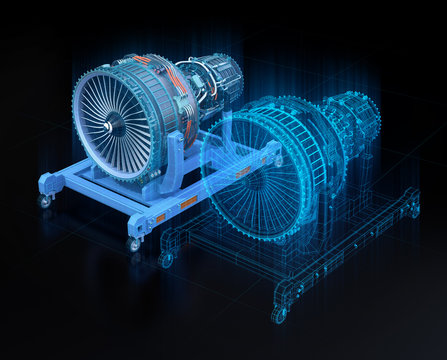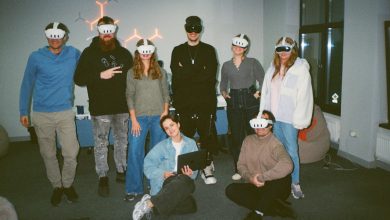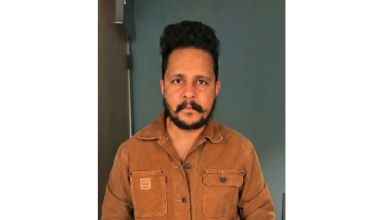
AI and Digital Twins of Risk are set to revolutionise commercial property insurance by replacing manual and costly risk assessments with real-time AI-enabled data analytics and satellite image analysis.
Digital Twins are a new term for the insurance sector, but it is not a new thing. Commonly used in the construction industry, Digital Twins have previously been employed to help builders, engineers and surveyors better understand the internal structures of a building. By creating a virtual model of the site’s assets, systems, networks and pipes, Digital Twins help us see a clearer and fuller picture and are used to predict and monitor projects.
By training Artificial Intelligence (AI) models and Natural Language Processing (NLP) to analyse unstructured risk assessment reports, and by bringing together over 300 data sources to create real-time digital twins of risk, we are seeing a revolution in how insurers and commercial property owners are measuring and mitigating risk.
Addressing the challenges of insurers
The insurance sector is in drastic need of modernisation when it comes to its traditional processes of assessing commercial property vulnerabilities and providing risk reports.
Conventional methods have lacked comprehensive real-time data and relied heavily on information obtained from a physical site visit by an engineer or surveyor. This leaves the report open to the risk of human error, a limited view of the site and minimal access to the abundance of proprietary data and socioeconomic information concerning the property and its location. Less than 5%-10% of commercial property locations are physically risk surveyed by insurers due to cost restrictions and the follow-up rates on risk improvement programmes are also poor, with only 1 in 7 risk recommendations being actioned.* Sending an engineer to physically assess property risks on-site also incurs additional considerations and operational expenses such as increased labour costs, a bigger carbon footprint and more time required to produce and receive the report. These factors ultimately restrict the insurer’s ability to provide a complete and sufficient risk report.
The industry-standard risk management approaches are failing to accurately define levels of risk in the marketplace, which has led to over £4Bn of commercial property insurance loss over the last 5 years in the UK according to the latest results from Lloyds of London.
By aggregating over 300 different sources of open proprietary data, IoT data and satellite image analysis, Digital Twins provide an efficient and instantaneous means of achieving a 360-degree view of risk on 100% of the property portfolio at a fraction of the current cost. As such, they hold the potential to transform and modernise the commercial property insurance market. Using real-time intelligent insight, Digital Twins make it possible to accurately develop digital, real-time models of risk at commercial properties without having to actually visit them.
Painting a bigger picture
When a risk engineer visits a property, they often only assess the accessible space within the premises. This makes up for only a small fraction of the risk associated with the building. Seldom do they open a window to see what’s outside or look across the road to gain an understanding of the wider external risks associated with local environmental, social, political, or economic factors that could implicate the property and its insurance?
By bringing in open data from over 300 different sources, Digital Twins can be used to paint a much bigger picture of all the elements associated with the risk of the property. Everything from the building’s financial, ownership and health and safety information obtained by Companies House and planning applications to the property’s size, number of levels and roof structure ascertained from satellite imagery and image analysis portrays an accurate representation of not just the risks to the site, but also around the site and to its supply chain.
Satellite data and natural catastrophe information also aggregate seismic, fire and flood information to determine whether the property is situated in a natural disaster zone or hazardous environment. COVID rates, lifestyle and demographic information, as well as crime data, can also all be harnessed to create an accurate indication of the socioeconomic risks to the property. Understanding the risk of the building is one thing, but understanding the trade between multiple parties and the risks involved in that trade is another.
The revolution in AI capabilities has resulted in much faster, more intelligent, and cost effective methods of managing large volumes of data and unlocking key insight in near real-time.
Using AI to predict future vulnerabilities
By providing a 360-degree view of risk, AI and Digital Twins can predict future vulnerabilities by assessing the probability of potential threats to the building and its assets. This enables organisations and insurance companies to develop proactive approaches to manage and minimise future risk.
A tragic example that comes to mind is the Grenfell tower incident. There is a huge amount of data from fire service call-outs that can be harnessed by Digital Twins to predict a building’s risk of environmental fire-related disasters, giving us insight into how fires are commonly started and where they are frequently encountered. This is invaluable when it comes to understanding risk, and enables us to do something called hyper-local predictions. If, for example, a local fire station had received well above the average number of call outs to a particular property in the last year, this data would become vital in helping insurers predict, and therefore mitigate, the risk of fire to the site or at similar properties.
However, our research shows that insurers are not currently gathering data from fire services when it comes to assessing risk. The absence of this valuable real-time information is not only a commercial risk for property owners and investors, but it is also fundamentally a risk to human life. Using real-time IoT (Internet of Things) sensors for flood, fire and weather data is imperative when it comes to making informed decisions to prevent damage to assets, cost of stock, and protect those within the community.
Building a better future
Through the use of AI and Digital Twins, predicting risk becomes a more precise art and presents a more positive future for commercial property owners, insurers and residents alike. Harnessing valuable real-time data through our own proprietary algorithms provides a more comprehensive and instantaneous assessment of risk which ultimately saves insurers time and money, as well as reducing their carbon footprint as no physical site survey is required.
Technology like this will play a key part in helping to drive business continuity, which is vital as we build back a better future from the economic recession and business interruption caused by Brexit and COVID. Insurers who take advantage of Digital Twins will see their role shift from policy provider to partner for their customers in helping to better manage risk.
We’ve had a fantastic response so far from insurers on the Innovate UK grant-funded pilot study of our Digital Twins of Risk AI programme, which involves building 20,000 digital twins of global properties ranging from retail stores and port authorities to wind turbine sites and distribution centres. For the first time, insurers have been able to get a 360 degree view of risk in real-time on 100% of their portfolios.
This technology not only has the potential to transform the industry and change, for the better, how the commercial property sector assesses and mitigates risk, but it also has the power to protect assets, preserve spaces and, most importantly, save lives.
For more information on Digital Twins and AI for risk, read our whitepaper: https://bit.ly/33FAiYR
* This is based on analysis of over 10,000 risk surveys. The analysis was carried out by Intelligent AI in 2020. Plus is also validated this month from the survey of 40 insurers.





